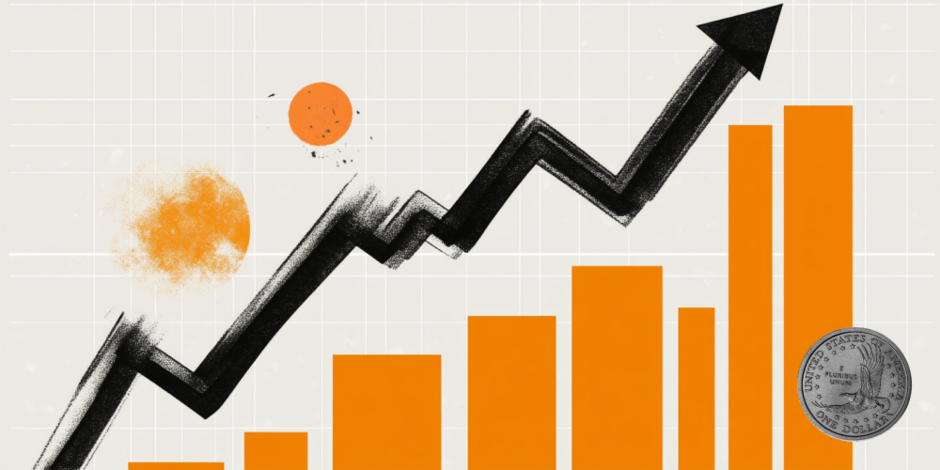US Dollar Index (DXY) advances to two-week high near 99.75; not out of the woods yet
- The USD scales higher for the third straight day amid hopes for a US-China trade deal.
- Signs of a faltering US economy and aggressive Fed rate cut bets should cap the buck.
- Traders now look to US macro data for some impetus ahead of the US NFP on Friday.

The US Dollar Index (DXY), which tracks the Greenback against a basket of currencies, attracts some buyers for the third straight day and climbs to a two-week high, around the 99.70-99.75 region during the Asian session on Thursday. The intraday US Dollar (USD) move higher is backed by US President Donald Trump's remarks, which adds to the optimism over the potential de-escalation of trade tensions between the US and China.
In fact, Trump said that there is a “very good probability we'll reach a deal with China.” He further added that we have potential trade deals with India, South Korea, and Japan. However, Trump’s top trade official said on Wednesday that trade negotiations with China were yet to take place. Moreover, Trump's rapidly shifting stance on trade policies and prospects for more aggressive policy easing by the Federal Reserve (Fed) might hold back the USD bulls from placing fresh bets.
Investors now seem convinced that the US central bank will resume its rate-cutting cycle in June and lower borrowing costs by 100 basis points (bps) by the end of this year. The expectations were reaffirmed by the disappointing release of the US GDP print, which showed that the economy unexpectedly contracted by 0.3% annualized pace during the first quarter of 2025. Adding to this, the ADP report on private-sector employment indicated that the US labor market is cooling.
Furthermore, the Personal Consumption and Expenditure (PCE) Price Index pointed to signs of easing inflationary pressure in the US, providing the Fed more headroom to cut interest rates amid the uncertainty over Trump's economic agenda. Hence, it will be prudent to wait for strong follow-through buying before confirming that the USD has formed a near-term bottom and positioning for an extension of the recent goodish recovery from a multi-year low touched last week.
Traders now look forward to Thursday’s US economic docket – featuring the release of the usual Weekly Initial Jobless Claims and ISM Manufacturing PMI. Apart from this, the US Nonfarm Payrolls (NFP) report on Friday will be looked for cues about the Fed’s rate-cut path. This, in turn, will play a key role in influencing the USD price dynamics and determining the near-term trajectory.
US Dollar FAQs
The US Dollar (USD) is the official currency of the United States of America, and the ‘de facto’ currency of a significant number of other countries where it is found in circulation alongside local notes. It is the most heavily traded currency in the world, accounting for over 88% of all global foreign exchange turnover, or an average of $6.6 trillion in transactions per day, according to data from 2022. Following the second world war, the USD took over from the British Pound as the world’s reserve currency. For most of its history, the US Dollar was backed by Gold, until the Bretton Woods Agreement in 1971 when the Gold Standard went away.
The most important single factor impacting on the value of the US Dollar is monetary policy, which is shaped by the Federal Reserve (Fed). The Fed has two mandates: to achieve price stability (control inflation) and foster full employment. Its primary tool to achieve these two goals is by adjusting interest rates. When prices are rising too quickly and inflation is above the Fed’s 2% target, the Fed will raise rates, which helps the USD value. When inflation falls below 2% or the Unemployment Rate is too high, the Fed may lower interest rates, which weighs on the Greenback.
In extreme situations, the Federal Reserve can also print more Dollars and enact quantitative easing (QE). QE is the process by which the Fed substantially increases the flow of credit in a stuck financial system. It is a non-standard policy measure used when credit has dried up because banks will not lend to each other (out of the fear of counterparty default). It is a last resort when simply lowering interest rates is unlikely to achieve the necessary result. It was the Fed’s weapon of choice to combat the credit crunch that occurred during the Great Financial Crisis in 2008. It involves the Fed printing more Dollars and using them to buy US government bonds predominantly from financial institutions. QE usually leads to a weaker US Dollar.
Quantitative tightening (QT) is the reverse process whereby the Federal Reserve stops buying bonds from financial institutions and does not reinvest the principal from the bonds it holds maturing in new purchases. It is usually positive for the US Dollar.
Author

Haresh Menghani
FXStreet
Haresh Menghani is a detail-oriented professional with 10+ years of extensive experience in analysing the global financial markets.

















